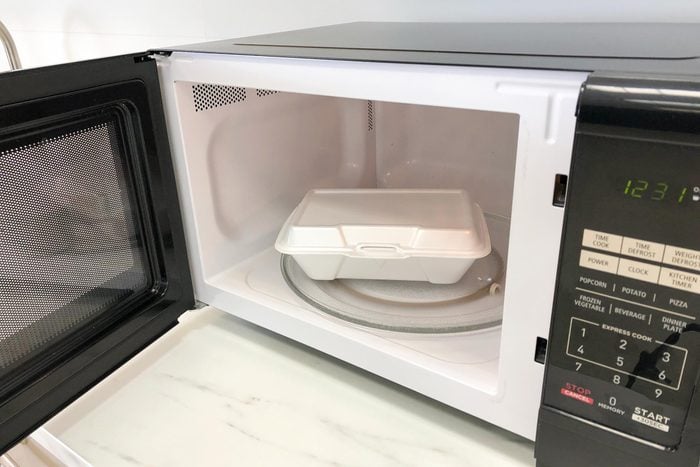Can You Microwave Styrofoam?
Updated: Nov. 30, 2023

Can you put plastic foam containers in the microwave? Let's explore whether it's safe to heat up takeout or restaurant leftovers.
When it comes to convenience, using a microwave to reheat food is second to none. But as you already know, not everything is safe to put in the microwave. Your restaurant leftovers and to-go orders are often packed in plastic foam containers. Not all foam containers are the same, nor are they all microwave-safe. (Learn more about whether you can put aluminum foil in the microwave.)
What Is Styrofoam?
Here’s a fun fact: There’s a good chance you’ve been using the wrong word to refer to plastic foam food containers and cups. Turns out, neither are made with real Styrofoam. Styrofoam is a trademarked brand name for a specific type of building product made by the Dow Chemical Company. It’s made from extruded polystyrene foam. The foam food containers we’re familiar with are made from a similar, but different, product: expanded polystyrene foam, or EPS. This material is about 95% air, which makes it super lightweight.
The styrene used to make foam containers is a human-made product, manufactured with products derived from petroleum and natural gas.
Can You Microwave Styrofoam?
The U.S. Food and Drug Administration (FDA) has deemed polystyrene food containers and packaging to be safe for hot and cold food items. However, not all foam containers should be microwaved. To determine if a foam container is microwave-safe, look for a small symbol of a microwave with wavy lines. That symbol means the FDA has determined the container is safe to heat in the microwave. If the container does not have that symbol, it’s not safe to use in the microwave. (Learn when you can microwave cardboard.)
What happens if you microwave plastic foam containers? There is a chance that, when heated, some styrene can migrate into the food within the container. This is particularly true for fatty items such as meats and cheeses. This is potentially concerning as styrene has been identified as a cancer-causing agent. Additionally, foam containers that are not marked as microwave-safe could melt or catch on fire if microwaved too long.
Even if you can reheat microwave-safe foam containers, should you?
Turns out, the very quality that makes these foam containers so useful (the ability to keep foods hot or cold) also makes them poor vessels for reheating food. To make sure your food is heated evenly throughout, transfer leftovers to a microwave-safe container, (you can microwave glass.) You can also place the food in an oven-safe container and heat it up in the oven.
Learn how to microwave leftovers the right way.
